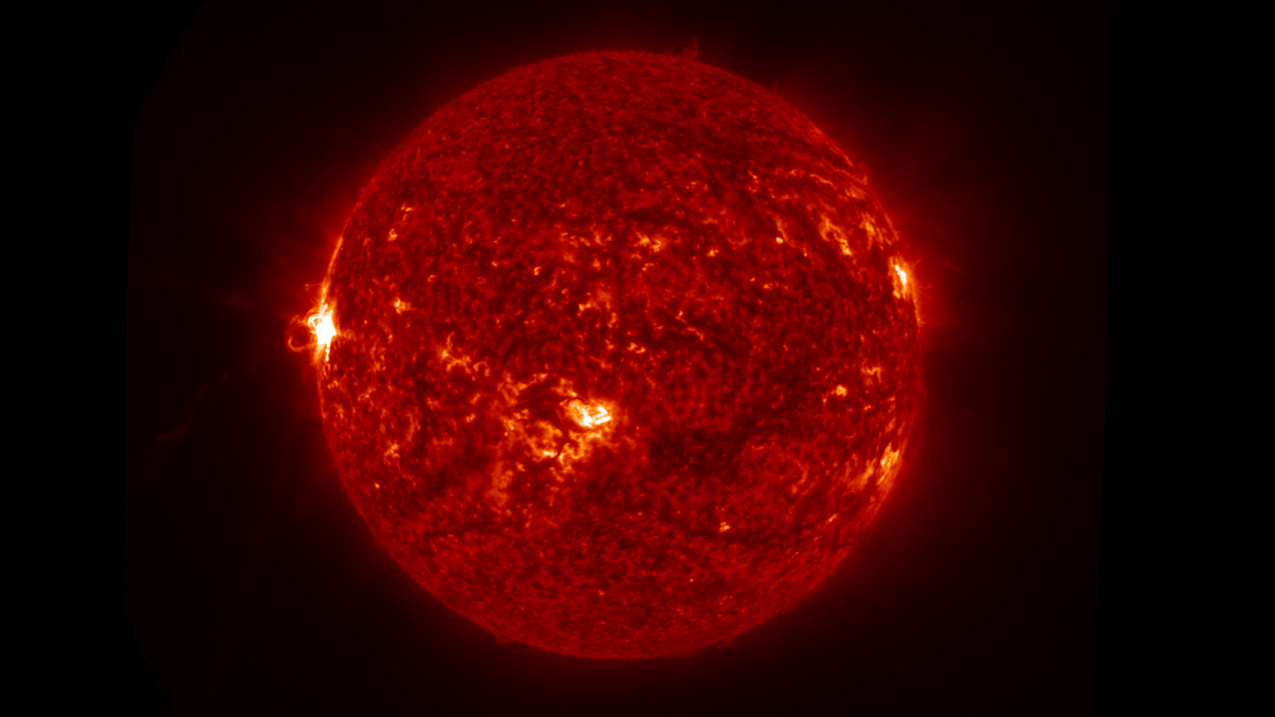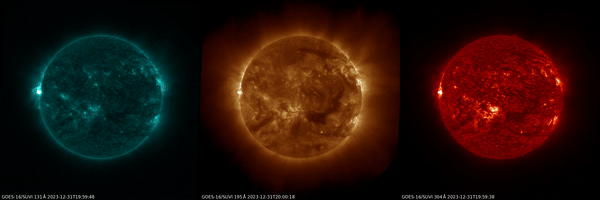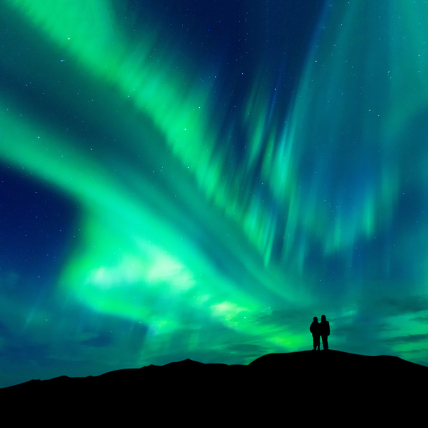
X5.0 solar flare (R3 Strong Radio Blackout) from NOAA/SWPC Region 3536, which occurred on 12/31/23. The flare was the largest observed since September 10, 2017, when an X8.2 flare occurred. Each sunspot is about the same size as the diameter of Earth, or even larger. (Image credit: NOAA Satellites)






